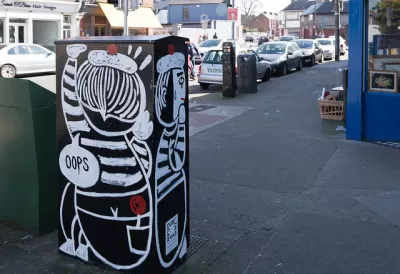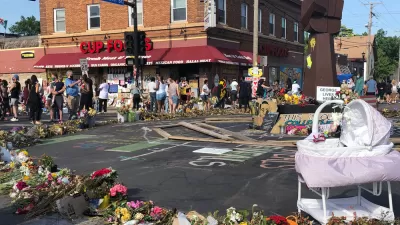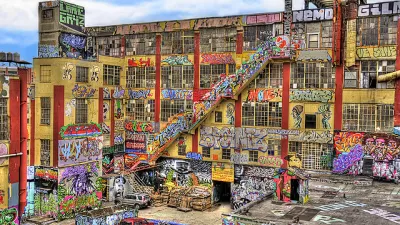There will be important functions in public space that are not always “art” whose value is not in proportion to their prettiness.

Rainey Knudson wants people to stop putting art on utility boxes. “In Houston, the underlying idea for our local box-painting effort is that it ‘converts blight into art by painting the blank canvases around the city,'” she wrote on Glasstire last week. "What’s not to love? Well for starters, when have you ever looked at a blank electrical box on the street and thought, ‘Gee, I wish someone with moderate artistic skills would paint a toucan on that?'"
Knudson’s critiques are a bit deeper than just complaining about the quality of the art work. First, she argues that we should let urban infrastructure blend into the background. ("Consider how, undecorated, these things disappear into the urban landscape. They aren’t 'blight'—certainly not in the way that litter or abandoned buildings are. Electrical boxes are something you probably never noticed, until your local municipality started decorating them.")
But the far more compelling argument is that it’s a way of spending public art money that is extremely limiting for artists. ("I think this bizarre trend has less to do with beautification than it does with cities wanting to take control of street art, to make it sanctioned, palatable, institutional, and toothless.")
Instead, Knudson proposes extremely open-ended public art proposals to be judged entirely on merit. I'd be interested to hear local officials' take on Knudson’s proposal.
However, it was a seemingly small comment Matthew Sekeletron—an artist from Troy, New York—made when he shared the article that has really stuck with me. Utility boxes are a common place to post flyers, and the poster suspected this was in part a sneaky way to combat that.Censhorthip.
FULL STORY: Could Public Art on Utility Boxes Displace Communication?

Trump Administration Could Effectively End Housing Voucher Program
Federal officials are eyeing major cuts to the Section 8 program that helps millions of low-income households pay rent.

Planetizen Federal Action Tracker
A weekly monitor of how Trump’s orders and actions are impacting planners and planning in America.

Ken Jennings Launches Transit Web Series
The Jeopardy champ wants you to ride public transit.

Washington Legislature Passes Rent Increase Cap
A bill that caps rent increases at 7 percent plus inflation is headed to the governor’s desk.

From Planning to Action: How LA County Is Rethinking Climate Resilience
Chief Sustainability Officer Rita Kampalath outlines the County’s shift from planning to implementation in its climate resilience efforts, emphasizing cross-departmental coordination, updated recovery strategies, and the need for flexible funding.

New Mexico Aging Department Commits to Helping Seniors Age ‘In Place’ and ‘Autonomously’ in New Draft Plan
As New Mexico’s population of seniors continues to grow, the state’s aging department is proposing expanded initiatives to help seniors maintain their autonomy while also supporting family caregivers.
Urban Design for Planners 1: Software Tools
This six-course series explores essential urban design concepts using open source software and equips planners with the tools they need to participate fully in the urban design process.
Planning for Universal Design
Learn the tools for implementing Universal Design in planning regulations.
Heyer Gruel & Associates PA
Ada County Highway District
Institute for Housing and Urban Development Studies (IHS)
City of Grandview
Harvard GSD Executive Education
Toledo-Lucas County Plan Commissions
Salt Lake City
NYU Wagner Graduate School of Public Service





























